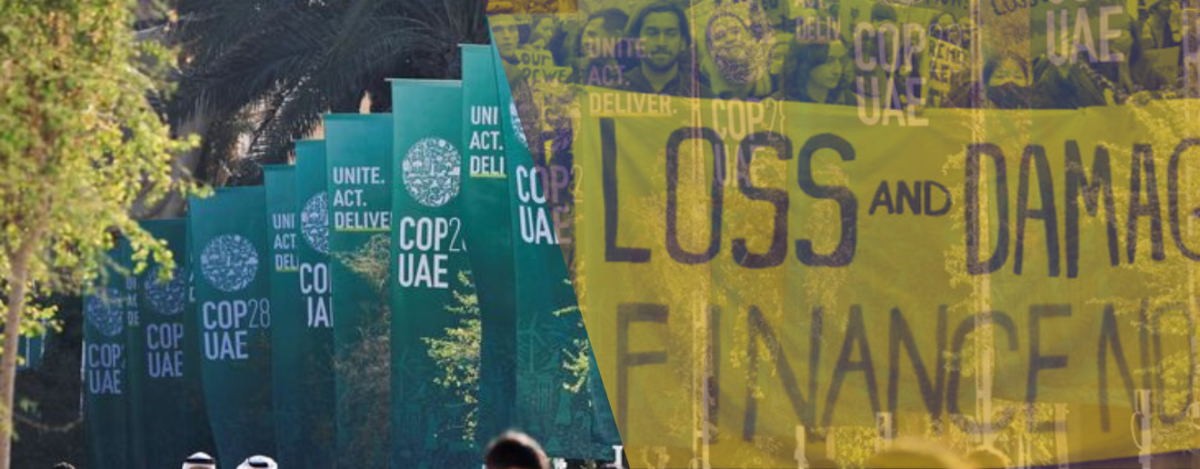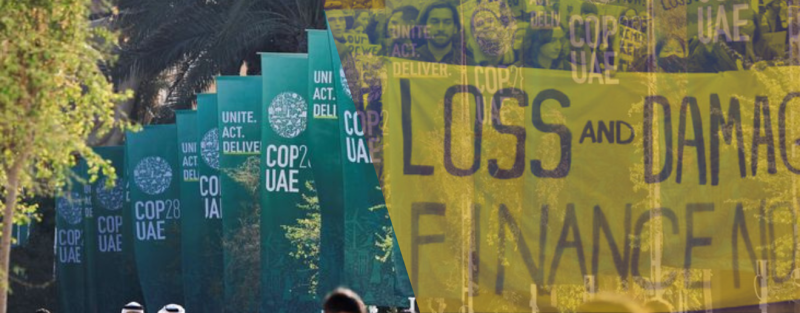Inadequacy of the newly operationalised Loss and Damage Fund a Huge Disappointment for South Asia
By Rushati Das

I remember the historic high note on which COP27 at Sharm El-Sheikh concluded with the last-minute establishment of the #LossAndDamageFund, last year. It was a moment to remember and celebrate, and brought a glimmer of hope for the climate-impacted nations, especially the highly vulnerable countries of the South Asian region, as it offered to support vulnerable countries suffering from the worst impacts of climate change and those facing growing disasters year after year. While the establishment of the Loss and Damage Fund was a positive move, welcomed by civil society, despite it being a ‘compromised deal’ and one that came after nearly three decades of campaigning, this was only the beginning of a long-drawn process. The decision itself was reached through a 24-member Transitional Committee, led by co-chairs from Finland and South Africa, who recommended that the Fund be provisionally hosted by the World Bank for four years (following the Bank’s acceptance of the 11 conditions made by developing countries) after which it could be reviewed and located elsewhere. The Transitional Committee was to provide recommendations for the set-up and operations of the Fund.
The World Bank – being a multilateral development bank, not governed by the United Nations Framework Convention on Climate Change (UNFCCC) or its principles of equitable climate action – was not a welcome choice at all. Also, locating the Fund in the World Bank included a high hosting fee in line with its business model, which is driven by providing loans. Developing country parties had called for a standalone, independent Fund directly under the #UNFCCC, which recognises these principles, and would have been more appropriate to ensure the disbursement of Funds in an equitable and just manner. But they ultimately agreed to have the #WorldBank host the Fund subject to certain conditions. After all, even independent funds under the UNFCCC, like the Green Climate Fund, have taken years to set up and operationalise, and have not been without bureaucratic hurdles for access to these funds.
Operationalised yet ill-funded
Fast-forward to a year later, and here we are, at #COP28 in Dubai, hosted in a larger-than-life venue. There was huge skepticism across the world, as the country hosting the event was a fossil-fuel-rich economy, and the President of COP28 Sultan Al Jaber was head of a prominent oil company ADNOC. For him or this COP to do anything significant to drastically reduce the world’s dependency on fossil fuels seemed a pipedream. But when on Day 1 itself, the Presidency announced the operationalisation of the Loss and Damage Fund, in an unprecedented, never-before move in the 28 years of COP, we, especially the civil society, were completely caught off-guard, and this also brought our defences down a peg or two, and raised our hopes. Though, soon enough our hopes were dashed somewhat when we saw that wealthy countries, primarily responsible for the climate emergency, had pledged a total of just over USD 700 million to the Loss and Damage Fund. The amount was far too little, far too inconsequential; in fact, it was less than 0.2% of the total economic and non-economic losses and damages developing countries face due to the repercussions of high-emitting countries. Climate Champion, the late Dr Saleemul Huq had, over almost 30 years, repeatedly reiterated the UNFCCC principle of ‘polluters pay’ in the climate regime, to ensure that it is based on pillars of equity and climate justice. So far the pledges have fallen far far short of what is needed – it is neither acceptable nor justifiable at all. While the Fund has been operationalised, we cannot afford to be complacent about this and must continue to call for more significant pledges.
Challenges and the Way Forward
Climate finance, unfortunately, has historically been favoured towards mitigation efforts. So a Loss and Damage Fund is a good way ahead. But the Fund needs to tackle the gaps that current climate finance institutions, e.g., the #GreenClimateFund, have wherein countries in dire need of them will be able to access them quickly, without extensive red tape and as a grant. It would be good to remember the 2022 press release, where UNEP noted that combined adaptation and mitigation finance flows in 2020 fell at least USD 17 billion short of the USD 100 billion pledged to developing countries.
So, what’s to be done?
While there seems to be unity among developing countries for more finance, be it for adaptation or loss and damage finance, this long-standing cry for unity needs to be used as a tool to continue to put pressure on our respective governments. What’s more, the Fund needs to be disbursed as grants and not loans. This would ensure that countries that need access to the Fund, who are in crisis, often both environmental and economic crises, will be able to do so without having to incur debt on debt, thereby sinking deeper and deeper into the debt trap. While loss and damage finance has its own limitations, increasing pledges to the Loss and Damage Fund will not help to address the issue of climate impacts. In order for the Fund to be effective, the root cause of climate change must be tackled – and that involves reducing emissions and phasing out all fossil fuels as part of the larger energy package that was discussed at this COP. However, until all fossil fuels are phased out in a manner that’s fair, full, fast, and funded, developing countries will continue to suffer the brunt of climate change with little to no adaptive capacities.
https://www.unep.org/news-and-stories/story/what-you-need-know-about-cop27-loss-and-damage-fund
https://greencentralbanking.com/2023/11/15/world-bank-to-host-loss-and-damage-fund
https://time.com/6343991/loss-and-damage-cop28/
Rushati Das is Program Coordinator, Climate Action Network South Asia (CANSA). She leads the Loss and Damage program in six countries of South Asia that have demonstrated a correlation between climate change and human mobility.
This article is edited by Purnima Joshi
#COP28 #GreenClimateFund #LossAndDamageFund #UNFCCC #WorldBank





